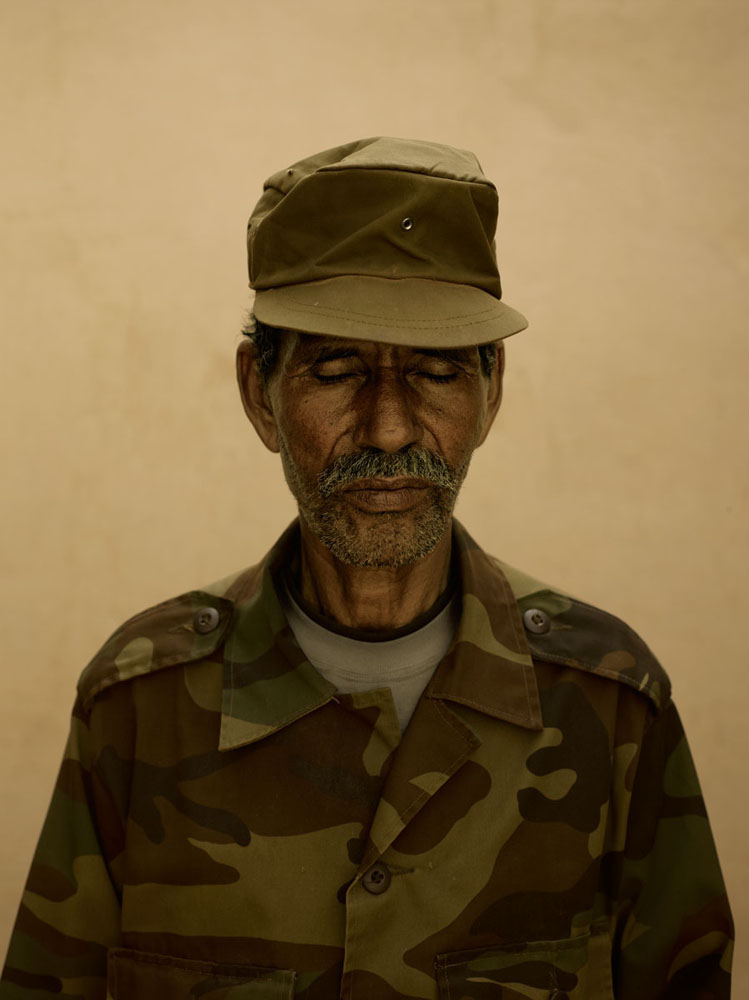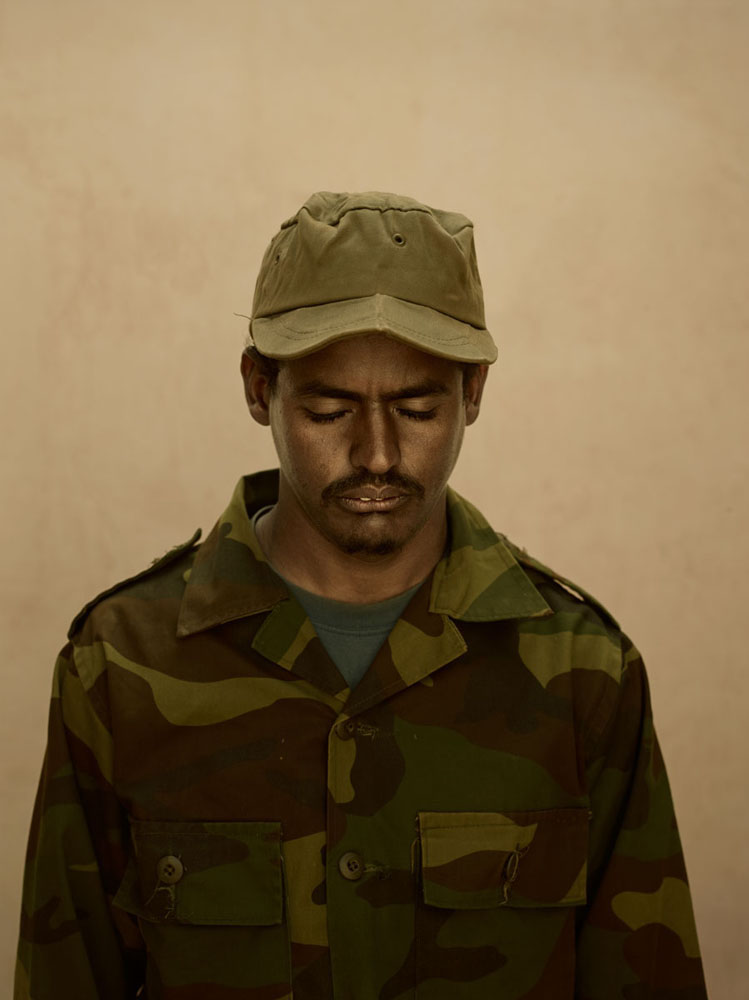From out of the toy chest and into the battefield, life-sized green army men occupy the Western Sahara in a new series from conceptual photographer Simon Brann Thorpe. Working with 50 active Western Saharan soldiers, each mounted on flat bases, frozen in classic “Army Man” poses, and encased in green cloth, he juxtaposes real troops with toys to embody the playful attitudes towards war that many are brought up with.
The troops are from an independence movement called the Polisario Front, which has resisted the Moroccan occupation of the native Sahrawi’s homeland since 1979. Amid a 16-year-long conflict and 23-year-old UN-brokered ceasefire, the area has become infested with landmines, refugee camps, and human rights violations. With the Legacy of War II – Toy Soldiers photo set, Thorpe aims his own ideological artillery, launching a cocktail of pop culture and firsthand documentation directly onto our screens.
Videos by VICE
“I attempted to imagine the emotional and physical manifestations of being trapped, powerless, in a perpetually unresolved cycle of postcolonial conflict,” Thorpe tells The Creators Project. A 2004 project revealing the horrifying fate of landmine victims first led him to the region. “The concept of Toy Soldiers came to me out of this cycle of thought and it just seemed to fit perfectly with the situation on the ground as well as allowing for people in the west to have an emotional, physical and nostalgic response to a completely foreign reality, triggered by a familiar symbol of their own childhood and culture.”

 Dormant Soldiers
Dormant Soldiers
The logistics of shooting in an area in the middle of the desert under UN mandated ceasefires are complex, which is a huge reason Toy Soldiers took over two years to plan. “The main stumbling blocks to the pre-production was the difficulty in communicating,” Thorpe explains. “The refugee camps have extremely limited internet and sporadic mobile phone coverage—when the military commander was stationed in the military region known as Mehairez in the area of Western Sahara known as ‘The Liberated Zone,’ the only forms of communication were emergency satellite phones. Add all these factors together and they equal a great deal of time in pre-production even after the commander had given his approval.”
Thorpe also had to get creative in art directing the shoot, as there are no costume shops, prop stores, or other conveniences for a conceptual photographer deep in the forgotten Western Sahara. He ended up using the soldiers’ own uniforms and military vehicles, and employing them to carve their Army Man bases from empty oil drums. “The soldiers would carry them in the heat and cut their fingers on them and all that kind of stuff,” Thorpe says. Once the scene was set, his final challenge was to explain to veteran fighters how to pose like “army men.” “I’m not sure that they anticipated that the project was going to be quite as hard work as it was, standing still under the Saharan sun is much more difficult that it looks in the final images.”

Toy Soldiers
The work was worthwhile for all involved, calling attention to the plight of a region that has faced decades of occupation. A 1600-mile-long mountain of sand forms the Berm, a massive wall second in size only to the Great Wall of China, enforcing the the division of the country—which is technically still a Spanish colony—with an estimated 120,000 Mororccan troops, according to Al-Jazeera, and the same landmines that inspired Thorpe’s original photo set. As VICE News reports in their five-part series The Sahara’s Forgotten War, the roots of the Arab Spring may well reach back to protests on the Polisario side of the wall, protected by the same soldiers Thorpe worked with for this photo series.
Toy Soldiers is an allegory for the war and for the post-colonial conflicts generally associated with sub-Saharan Africa. But, the photographer explains, one of its biggest strengths is its inquisition: “The overriding narrative asks questions questions about the conflict in Western Sahara such as, why is it no closer to being resolved than it was 40 years ago? How is it that so many refugees (over 160,000) can remain so utterly invisible?” He explains. “But there is a meta-narrative to the project that ask all kinds of questions such as; how images of war and conflict are consumed especially in this digital age that is ravenous for content but short on attention spans, what makes one conflict more newsworthy than another, what are the implications of ubiquitous images of graphic suffering and how to communicate about war and conflict in their absence. And, not least of all, the project asks questions of our own culture’s obsession with the glorification of war through entertainment and children’s toys!”

LeJuad No.01

Budhair No.02

Budhair No.03

Flag Rising on Western Sahara

 Dormant Soldiers
Dormant Soldiers
Thorpe has published Toy Soldiers as a photography book in the UK, which is available to preorder in the US through Amazon, his website, or Dewi Lewis Publishing, and will be widely released September 15 to coincide with the 40th anniversary of the Western Saharan conflict.
Related:
[Exclusive] Artist Hides a $2,000 Gold Nugget Inside a Mansion Filled with Dirt
Robot Cops are Directing Traffic in The Congo
Street Artist Invader Goes to Tanzania
Trevor Paglen Documents The Invisible And Analyzes Government
More
From VICE
-

Bettmann / Getty Images -

Screenshot: LEVEL5 Inc. -

Wilatlak Villette/Getty Images -

Scott Dudelson/Getty Images